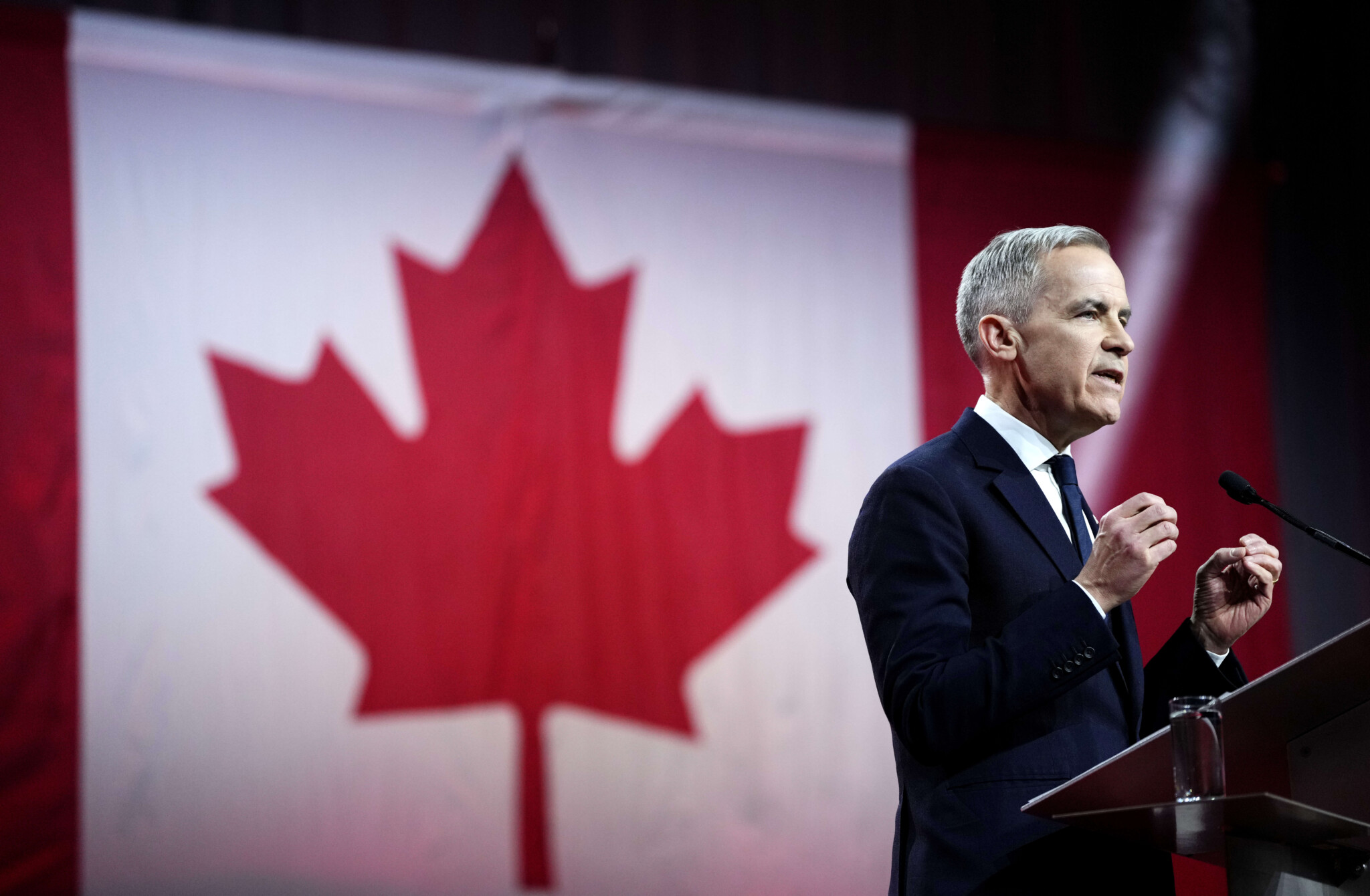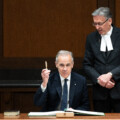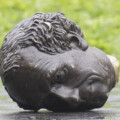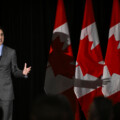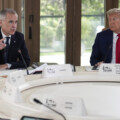Welcome to Need to Know, The Hub’s roundup of experts and insiders providing insights into the political stories and developments Canadians need to be keeping an eye on this week.
Mark Carney is no Michael Ignatieff
By Sean Speer, The Hub’s editor-at-large
Mark Carney’s entrance into elected politics has drawn comparisons to former Liberal leader Michael Ignatieff. The comparison isn’t without any justification. They’re both highly credentialed and successful. They both made their marks as world leaders in their respective fields. They both ultimately returned home with aspirations of leading the country that they left to become members of the global meritocratic elite.
(I don’t say that with any disdain by the way. Ignatieff and Carney’s personal accomplishments on a global scale are something that Canadians should applaud rather than abhor. But that’s a subject for another column.)
The real point here is that there’s been an assumption in some circles—namely conservative ones—that Carney, like Ignatieff, is another cosmopolitan carpetbagger with a lofty sense of entitlement to lead Canada.
This comparison is unfair—to Ignatieff. It involves a bit of revisionist (and unfair) history about Ignatieff’s foray into politics. He didn’t simply return home for the brass ring. He sought to embed himself into Canadian political life. He stood for election in the 2006 general election campaign, ran twice for the party’s leadership, and led the party for the two years prior to its defeat in the 2011 election.
Carney, by contrast, resisted previous overtures for him to enter politics until Justin Trudeau’s leadership had effectively failed. Only at that opportunistic moment was he prepared to cross the Rubicon into politics. It maximized the upside and minimized the downside. Win and he becomes prime minister. Lose and go back to the private sector. Either way, the whole commitment could be wrapped up in mere months. As a friend of mine has put it: “Has anyone worked so little to deserve the title of prime minister?”
It’s in keeping with the Carney’s political persona which conveys a deliberate detachment from politics. He’s attempted to turn his technocratic credentials and experience into a virtue for the moment. He’s even said that were it not for the country’s current challenges, he wouldn’t be pursuing political office. His appeal is that Canada doesn’t need a politician. It needs a technocrat.
His closest parallel isn’t Ignatieff who sought to embrace politics. It’s the former European central banker-turned-Italian Prime Minister Mario Draghi who similarly entered politics in an unconventional way and positioned himself as someone to uniquely positioned to steer his country through turmoil by transcending politics and offering up bureaucratic leadership.
It will be interesting to see how Canadians ultimately respond to such a political proposition. One gets the sense that they’re less deferential and more democratic than the Italians. They prefer politics and all of its messiness over the cold detachment of technocratic governance. We’ll soon find out.
Hit back hard, Canada
By Howard Anglin, former deputy chief of staff to Prime Minister Stephen Harper
The view that Canada should not retaliate against Trump’s tariffs rests on the fact that the larger American economy can absorb much more damage than ours. This is a rational argument based on comparative material advantage, which I’ve seen made by serious businessmen. But there is not much that is rational about this conflict, and a tariff war is not merely the continuation of business by other means.
Wars are not necessarily won by the side with the material advantage—if they were, the U.S. would have won one since 1945. More often the side that backs down first is the one that doesn’t have a good reason to keep fighting. Right now, it is easy for a Canadian prime minister to explain why we must fight back against unprovoked aggression, while it is hard for Trump to explain why it is worth crashing the stock market to stick it to Canada.
Lincoln warned that “A house divided against itself cannot stand.” Right now, Canada’s house is united. On the other side, Americans are politically divided and Republicans are divided among themselves over the wisdom of tariffs against a friendly trading partner. If it stays that way, we have an advantage. That means not making rash escalatory threats that risk uniting Republicans against us but pushing back firmly, tit-for-tat, and relying on our best ally: the Dow Jones index. We don’t have to defeat the American economy, we just have to outlast the American public’s appetite for the fight.
Don’t read too much into Carney’s cabinet choices
By Yaroslav Baran, co-founder of Pendulum and former communications director to both Stephen Harper and the Conservative Party
With a new prime minister reportedly being sworn in tomorrow, all eyes are on the “signals” Mark Carney is sending with his new team. But in reality, cabinet-making is hardly a free-rein effort, and new PMs face considerable constraints.
First of all, he can’t just keep the same cabinet. When a PM resigns, the whole government is dissolved and a new one needs to be sworn in—in this case, to be styled “The 30th Ministry of Canada.” Nor would he want to recycle the old team. After two years of pronounced Trudeau fatigue—and a polling rebound only after the latter announced retirement—Carney doesn’t want his own cabinet to look like Team Trudeau with lipstick.
Now, while it’s always a mug’s game to guess who will end up where, there is a structural formula to how cabinets are formed. In short, it’s a huge balancing act. And consequently, you can’t read too much into them, because they can end up largely writing themselves.
First, a new PM will want a show of unity. That means Freeland and Gould are in. Next, he’ll reward his loyalists—particularly those who parked their own leadership aspirations to back him. Here, think LeBlanc, Champagne, Joly, Anand, MacKinnon, and Wilkinson. Problem is that starts to look like Trudeau Cabinet 2.0, so enter an infusion of new blood to balance them out.
But then comes regional balance; tradition and prudence dictate every province and at least one territory be represented. Then demographic balance: gender, official language, ethnocultural, religious, and key policy constituency (like labour, business or environment).
At the end of the day, all in, many cabinets end up being far less deliberate, and far more just a reflection of the cards a new leader’s been dealt. Maybe we look past the attempted “new signals” and just accept we’re really getting the old team, reshuffled.
The Liberal tent gets a little bigger
By Sabrina Maddeaux, a political columnist
One of the most interesting, and so far underrated, ways Mark Carney is attempting to differentiate himself from Pierre Poilievre is his attempts to expand the Liberal tent and signal more diverse viewpoints are welcome. He’s made a point to clearly communicate to Canadians and potential allies that being a Blue Liberal or even Red Tory doesn’t mean you can’t find a place in his coalition—or even cabinet.
His reported outreach to former CPC leadership contender Jean Charest was clearly meant to show this, and swirling rumours that Christy Clark may run under the Liberal banner add to the impression. One of Carney’s first meetings post-victory was a breakfast with Ontario Premier Doug Ford.
Federal Conservatives, who once victory seemed all but assured fell back into old habits of purity testing and tent tightening, need to reverse course quickly. During a “team Canada” era, the public wants someone who can work across aisles, and, with polls tightening in key ridings, the CPC can’t afford the luxury of insularity. They need to remember the big blue tent is an advantage, not a liability, and show nervous voters they have a home within it if they want to win against Carney and his quickly expanding red tent.
